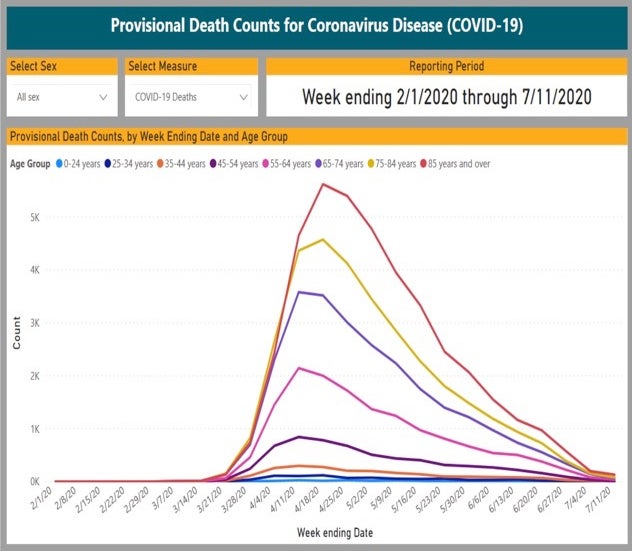- 17 Jul 2020 11:10
#15108148
https://covid19.who.int/region/amro/country/us
Trump and the WHO do not get along but according to the WHO, there is no evidence of a second wave forming.
If I cherry pick from July 6th onward, average daily deaths are roughly 599 a day, rounded up.
To put this in perspective, an average of 7,708 people died in the US each day in 2017: https://www.cdc.gov/nchs/fastats/deaths.htm
Looking at the graph, the rise in case numbers started in mid to late June. We are already more than two weeks beyond that point and there has been no rise in deaths, instead they have continued to fall. Therefore, there is no evidence thus far of a second wave.
As I wrote in another thread, I expect conspiracies about the death numbers being suppressed to start appearing as that will be the only way they might keep this going until the election, yet similar data in the rest of the world will make that hard to argue for.
Trump and the WHO do not get along but according to the WHO, there is no evidence of a second wave forming.
If I cherry pick from July 6th onward, average daily deaths are roughly 599 a day, rounded up.
To put this in perspective, an average of 7,708 people died in the US each day in 2017: https://www.cdc.gov/nchs/fastats/deaths.htm
Looking at the graph, the rise in case numbers started in mid to late June. We are already more than two weeks beyond that point and there has been no rise in deaths, instead they have continued to fall. Therefore, there is no evidence thus far of a second wave.
As I wrote in another thread, I expect conspiracies about the death numbers being suppressed to start appearing as that will be the only way they might keep this going until the election, yet similar data in the rest of the world will make that hard to argue for.
Lmao, I guarantee you no fund manager is driving an ETF based purely on spite. -- some guy out there actually believes this.














 - By Doug64
- By Doug64